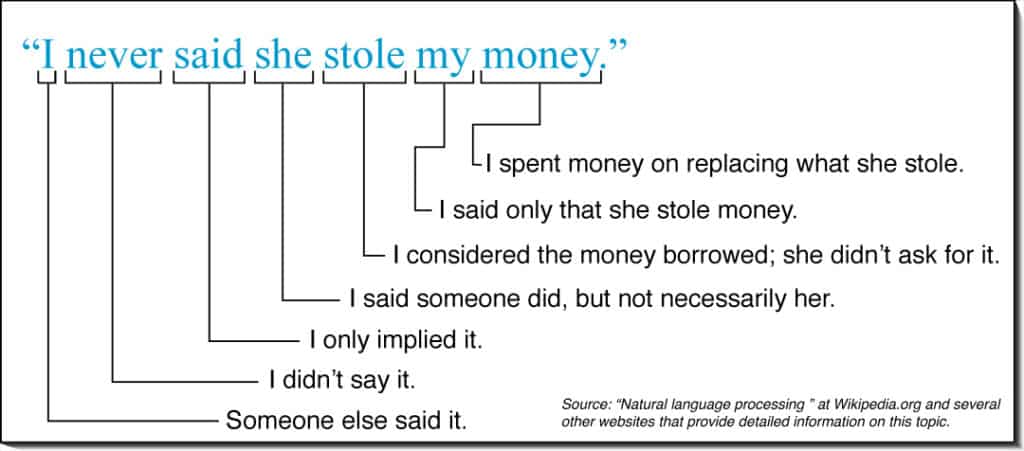Standing in front of an audience and giving a speech can be daunting but with the right training and preparation public speaking can become easy and effortless to anyone.
Here are three key areas to focus on when training yourself to be an eloquent and entertaining public speaker. The exercises and techniques are intended to help get you started and build your confidence when speaking in front of a crowd. Let’s make the training process of speech giving as fun and easy as we can.
If you are reading this you may be feeling nervous about speaking in front of an audience,
Let’s get started by working on your delivery.

Step 1:
Keep It Entertaining
For your sake and for your audience’s
Connect With What You Have To Say
It is important when you are practicing to really connect to your own speech and constantly listen to what you are saying. Simply repeating the text again and again will be of no use if you find no strong complicity with the words. Make sure that you listen to yourself and not lose the authenticity behind your text when rehearsing. If you can’t connect to your ideas, then how could your audience?
There needs to be understanding and sincerity in the words you say so that your audience can feel also feel interested and intrigue in what you will be teaching.
So if you feel a lack of connection to your text, now is the moment to go back and reword phrases in order to adapt it to suit your personal style. Add in stories of anecdotes if this helps. People love to hear a story when being spoken to.
Exercise
Take the time to read your text out loud and pretend that it is the first time you hear of this concept or speech. Does anything sound awkward, insincere or difficult to comprehend?
Try Numerous Variations
Play Around With Intonation and Delivery
Once your speech has been written and you connect with the text, the beauty of how you’ll choose to deliver the words is what will bring them to life. This is the really fun part as it can give your text any texture you want, depending on how you pronounce, pace and emphasize certain words the meaning of sentences may change. .
Image 1 is an example of how emphasis can affects the meaning of a sentence. Depending on which word you place emphasis in the sentence “I never said she stole my money” the significance changes.

Exercise
Take your text and play around with where you’ll pause, speed up, slow down or where your tone will change. Print the speech out multiple times, grab your favourite coloured pens, highlighters, and get creating. Each text should be underlined and highlighted in different sections, now is your time for trial and error. Once you have come up with some different versions it is time to test it out.
No one can judge your practice time, so if it sounds terrible at times that is absolutely okay, this is your time alone to decipher the good from the clumsy.
Let your ear guide you through your speech and once you have tried speaking it out in a variety of ways you’ll be able to choose and settle with the version that feels most genuine and appropriate for you.
One Step Further : Try recording yourself to be able to perfectly compare and contrast the versions of your speech you have come up with.

Step 2:
Be Confident
You owe it to yourself
Dealing With Nerves
Nerves can be a good thing if they are controlled, or crippling if they are able to take over.
It is vital to be able to get ahead of your nerves and figure out how to train yourself to calm down before you find yourself standing in front of your audience.
Breathing Techniques
Breathing is known to calm, lowering your blood pressure. Breathing deeply sends messages to your brain telling you to relax and is known to relieve tension.
- Breathe in on a count of three seconds, hold for three and release for three seconds. Repeat this three times.
- Breathe in for three seconds, hold for three and exhale for as long as you possibly can, once you think you have no more air to exhale, clench your bum cheeks, exhale that final bit of air left and then breathe in.
Laughing
- The Mayo Clinic writes that raucous laughter can cause your body to decrease its blood rate and therefore helps one to feel relaxed. So find something that really cracks you up and enjoy a good belly laugh.
- How this fight escalates always gets me: https://www.youtube.com/watch?v=KMzCps7xXEU
Music
- Singing is one of the activities that calms me the most. Humming or softly singing my favourite tune before speaking in public always calms me down. It not only allows you to control your breathing, which we know is calming, but also helps distract as you tend to focus more on tune and lyrics than the mounting fear of your speech.
- Listen to some music. If you’re not much of a singer that’s okay. Plug in your headphones and listen to some music that will distract you and help bring up your confidence. We associate songs to certain mind frames, so perhaps best to leave the sad breakup songs, and play some songs that will build you up and will help condition you to feeling brave and confident.
Dress to Feel Good
It’s a given that if we are standing in front of a group of people we want to portray a certain appearance and project a certain image of ourselves. Though clothes have nothing to do with the words you will deliver, the confidence that your attire chosen will bring to your attitude when giving a speech is vital.
Make sure you are comfortable in your chosen outfit. Is my jacket so tight that I can’t lift my arms? If you sweat profusely will this shirt give you away and create sweat patches down to your hips? Are the high heels that make your legs look amazing also likely to make you trip? Is the collar on your shirt too tight that it constricts your movement? Choose an outfit where you can feel sexy, powerful, confident and clever all whilst keeping you comfortable. Once you know what you’ll be wearing, practice in it. Actors have dress rehearsals in costume to know what works and what doesn’t and so should you before speaking in public.
Think Positive
It’s vital you acknowledge that you are speaking for a reason. You have to believe that you are the best person to be giving this speech. You have practiced enough, written a good speech and now is your time to shine!
Trust that the person who appointed you to give this speech knew why you were the best person for the job and if you chose to give this speech yourself, trust that you knew why you would be the right person to stand in front of you audience. Let your audience know why you were the designated spokesperson and what unique insight you can bring to them.
This does not mean that you need to feel superior to everyone in your audience. Humility can often be the likeable way of relaying a confident persona, but understanding why we are suited or the best person for the job will help you step in front of your audience with confidence.
Exercise
Write down three reasons as to why you are the right person to deliver this speech and what unique perspective you alone can bring to your audience.

Step 3:
Practice Makes Perfect
No cutting corners here
Practice really does make perfect and just like any other skill, public speaking must be rehearsed again and again. Improvising will not work when you have an audience giving up their time in order to hear what you have to say.
It is important to practice your speech out loud from home prior to standing in front of your audience. So instead of sitting and re-reading your speech once more it is time to stand up and get performing.
Exercise:
From the comfort of your own home, picture that there really is an audience watching you. Get a feel for the right moments of when to pause and pace your speech in front of a crowd. If necessary, place some teddy bears, eggs with glued on googly eyes, a pet, family member or even friend to have a real audience watching you. Listen to yourself as you speak, think about your body language, your eye contact with each audience member, you pace and tone.
One Step Further
- Record yourself: We are all our worst and harshest critics. Time to give yourself some constructive criticism. Make sure you remember the word constructive though, we aren’t here to tear ourselves down just allow our techniques and public speaking skills to develop and grow.
Here is a checklist of some things to look out for when re-watching yourself:
- Did I sound confident?
- Did I share my eye contact with the audience all around the room ?
- Did I vary the tone of my voice ?
- Did I give my audience time to reflect on my important points?
- Did I speak too quickly?
- Did I speak too slowly?
- Did I vary the pace in my speech?
- Did I sound genuine?
- Did I ‘umm’ and ‘ahhh’ throughout my speech?
- Did I have any humour in my speech?
- Did I move nervously, shuffle on the spot, figet…?
- Did I sound interested in my own own?
- Was I boring?
- Did my introduction and conclusion have a link?
- Did I make an impactful final statement?
Once you look over your video write down:
– five things from your speech you liked
– five things that you could improve on.
Go back and re-do the exercise as many times as you see fit. Have you noticed that your habits that needed improving have diminished?
You should be feeling confident and well prepared by now!
These exercises are just a few little tricks and tips that can be used to improve your public speaking skills from home. Try each in your own time, make sure you keep practicing, breathing deeply and know you’ll knock’em dead.
Break a leg , you’ll be great!
Best,
Daniela


